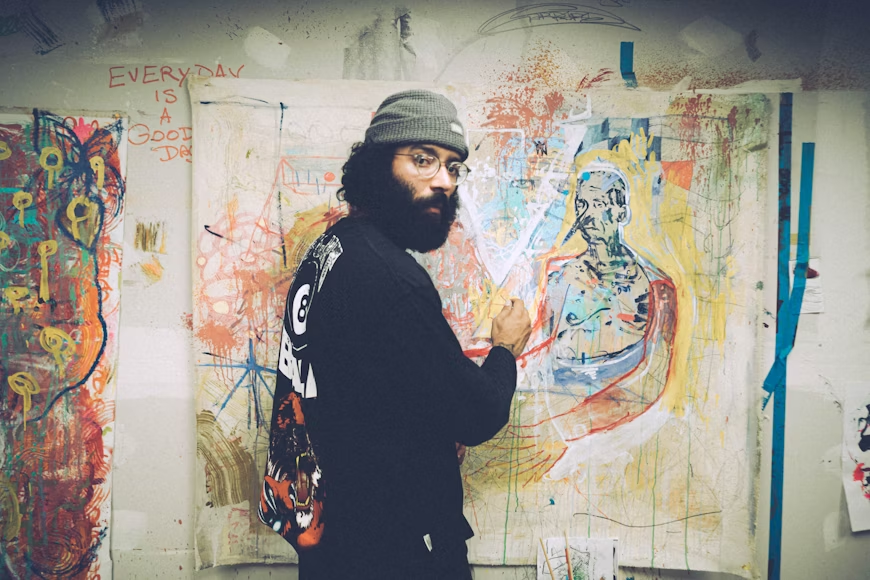Introduction
On a gray wall under a railway bridge in New York in the 1970s, an anonymous hand scrawled a name. It was quick, illegal, and destined to be painted over. Yet that moment marked the birth of a revolution in art that continues to shape cities around the world today. What began as graffiti tags in overlooked neighborhoods evolved into murals that attract tourists, define urban identity, and sell for millions. Street art is no longer dismissed as vandalism. It is a movement that has crossed continents, reshaped visual culture, and raised questions about ownership, authority, and community. To understand its evolution is to understand the ways humans use creativity to claim space, tell stories, and challenge power.
Graffiti Roots: Voices from the Margins
The earliest chapters of modern street art unfolded in New York City during the late 1960s and early 1970s. Young people from marginalized communities, often excluded from galleries and institutions, began writing their names on walls and subway cars. Known as tagging, this act was less about destruction than about existence. In a city that ignored them, these youths declared: I am here. I matter. The repetition of a tag across neighborhoods turned individuals into legends, known by pseudonyms like Taki 183 or Seen. For authorities, it was crime. For the artists themselves, it was identity and defiance. Spray paint became a voice when society offered none.
The trains of New York became moving canvases, carrying messages from the Bronx to Manhattan, transforming steel into rolling exhibitions. This democratization of space unsettled officials but electrified communities. It was art without permission, created outside systems of validation. In its raw urgency, graffiti was not merely vandalism but a protest against invisibility. It asked a question that still resonates: who gets to decide what counts as art?
From Graffiti to Murals
As the movement matured, some artists pushed beyond tags to larger works. Murals emerged, often filling entire building facades with color, characters, and complex lettering. These were not spontaneous scribbles but planned compositions requiring time, skill, and collaboration. In neighborhoods neglected by city authorities, murals turned gray blocks into vibrant landmarks. They told stories of community pride, political struggle, and cultural heritage. What mainstream critics saw as blight, residents often embraced as beauty in spaces starved of it. The streets themselves became galleries where anyone, regardless of background, could engage with art for free.
In cities around the world, similar patterns unfolded. In São Paulo, muralists painted favelas with bold imagery, asserting dignity in communities often stigmatized. In Berlin, the remnants of the Wall became a canvas for defiance and hope. Across Africa, artists turned crumbling buildings into monuments of resilience, weaving local tradition with global aesthetics. The wall was no longer just concrete; it was a page, a mirror, a battlefield.
Street Art Meets the Establishment
By the late 20th century, street art could no longer be ignored. Galleries and collectors began to pay attention. Artists like Jean-Michel Basquiat and Keith Haring moved from sidewalks into museums, bringing their street-born energy into mainstream art. Basquiat’s work retained the rawness of graffiti but infused it with biting commentary on race and power. Haring’s iconic figures—bold, cartoon-like, and socially charged—spread messages of love, activism, and awareness. They proved that the language of the streets could hold its own in elite spaces. Yet this transition raised new tensions: could art born in defiance survive within institutions it once resisted?
Perhaps no figure embodies this tension more than Banksy. Emerging from Bristol in the 1990s, his stenciled works combined biting satire with visual wit. From rats carrying slogans to a girl letting go of a balloon, his pieces captured attention precisely because they appeared in public, uninvited. Banksy’s anonymity, his refusal to play by institutional rules, only heightened his allure. Yet ironically, his works now fetch millions at auction, sometimes even when cut directly from walls. Street art had become commodity as well as rebellion, both embraced and resisted by the establishment.
The Globalization of Street Art
Street art is no longer confined to a handful of cities. It has become a global phenomenon. Festivals in Melbourne, Bogotá, Johannesburg, and beyond invite artists to transform entire districts into open-air museums. Murals span stories-high facades, attracting tourists and reshaping local economies. Governments that once criminalized graffiti now sponsor street art festivals as tools of urban renewal. The irony is not lost on those who remember when a spray can could land someone in jail. Yet this global expansion reflects the movement’s adaptability. Street art speaks in a language that crosses borders: bold color, urgent message, public presence.
In some contexts, street art still carries its rebellious spirit. In authoritarian regimes, walls bloom with anonymous stencils mocking leaders. In protest movements, slogans and murals reclaim public squares. In others, it serves as beautification, branding, or even state-sanctioned storytelling. The very flexibility of street art—its ability to be both dissent and decoration—shows its unique place in the cultural landscape. It is at once underground and mainstream, ephemeral and permanent, outlawed and celebrated.
The Psychology of Street Art
To understand why street art resonates so deeply, we must consider psychology. Public art changes how we experience space. A blank wall is unnoticed, but a mural demands engagement, interrupting daily routines with sudden bursts of meaning. For the artist, the act of creation is often an adrenaline-fueled assertion of agency. For the viewer, encountering art in the street bypasses the formality of galleries—it is unfiltered, democratic, immediate. Psychologists note that art in public space fosters belonging, pride, and even reduced crime, as communities identify with their environments. Yet it can also provoke unease, particularly when the art challenges authority or unsettles established norms. This tension is precisely its power: it forces us to confront what we expect from our shared spaces.
The Ephemeral Nature of the Medium
Unlike works in museums, street art is vulnerable. It may be painted over in hours, weathered by rain, or demolished with a building. This impermanence is part of its message. A mural is not just the image but the moment it existed in—a record of time, place, and social mood. When it vanishes, it lives on in memory, photographs, and the stories people tell. This fleeting quality makes street art more akin to performance than to permanent object. Its temporality is its truth: nothing in public life is fixed, and every wall is a contested space. To create despite impermanence is itself an act of resilience.
Street Art in the Digital Era
Today, the reach of street art extends far beyond the block where it is painted. A single mural can be photographed, shared on Instagram, and seen by millions within hours. Artists now create with dual audiences in mind: the local pedestrians and the global digital spectators. Social media has amplified visibility but also altered the dynamics of creation. Some accuse street art of becoming too polished, made for the feed rather than the community. Others argue that online circulation democratizes access, letting people everywhere engage with works they might never encounter in person. In either case, the digital has become inseparable from the physical, making the street wall both a surface and a stage for global conversation.
The Question of Ownership
Street art continues to provoke debates about ownership. If an artist paints on a public wall, who owns the work—the artist, the property owner, or the community? When artworks are cut from walls and sold in galleries, does their meaning survive the transition? Is it theft to remove a mural, or theft to paint without permission in the first place? These questions highlight the paradox of a form that thrives on public presence yet is increasingly commodified. Street art belongs everywhere and nowhere, claimed by artists, residents, collectors, and cities all at once.
Conclusion
From the underground tunnels of New York to the curated festivals of Europe, from the angry scrawls of protest to the polished murals of city branding, street art has traveled a long road. It began as vandalism, became identity, turned into protest, and rose to global recognition. Its journey mirrors humanity’s own: the desire to be seen, to leave a mark, to tell a story in a world that might otherwise overlook us. Whether you see it on a crumbling wall or a curated Instagram feed, street art continues to remind us that creativity cannot be contained. It will always find a surface, always find a voice, always insist that walls are not just barriers but canvases. In the end, street art is not about permanence but presence—the assertion that, for a moment at least, someone dared to speak in color where silence once stood.

